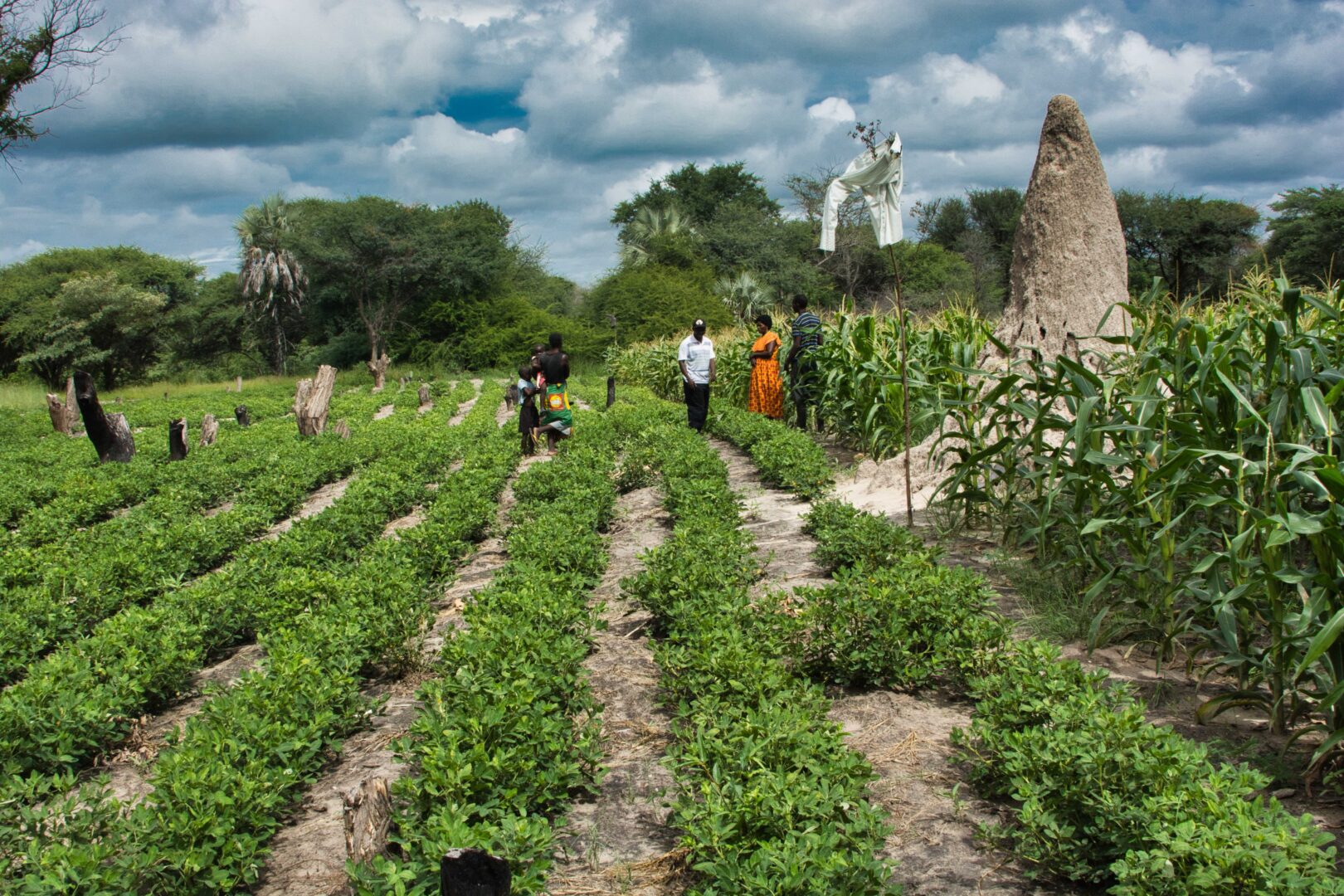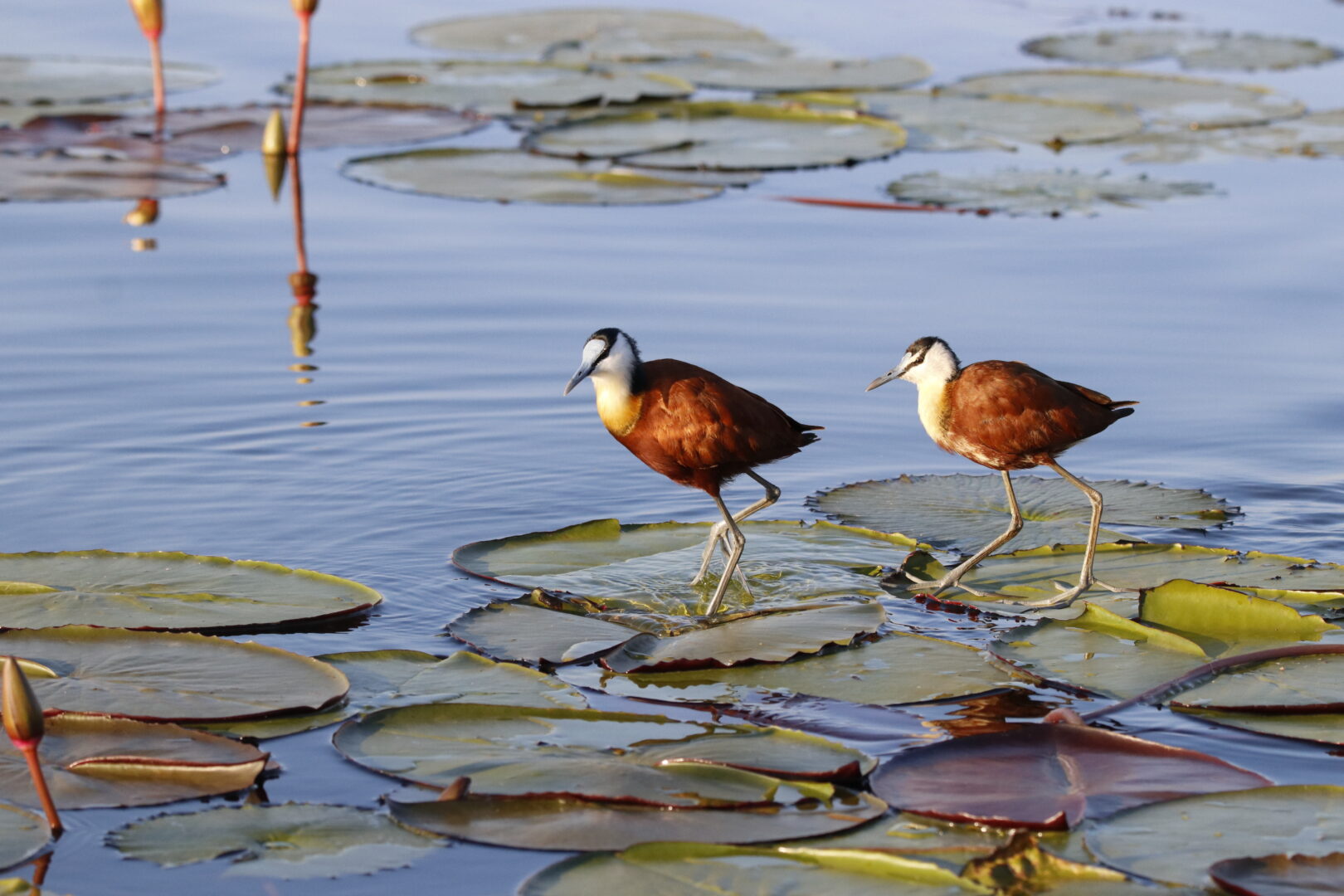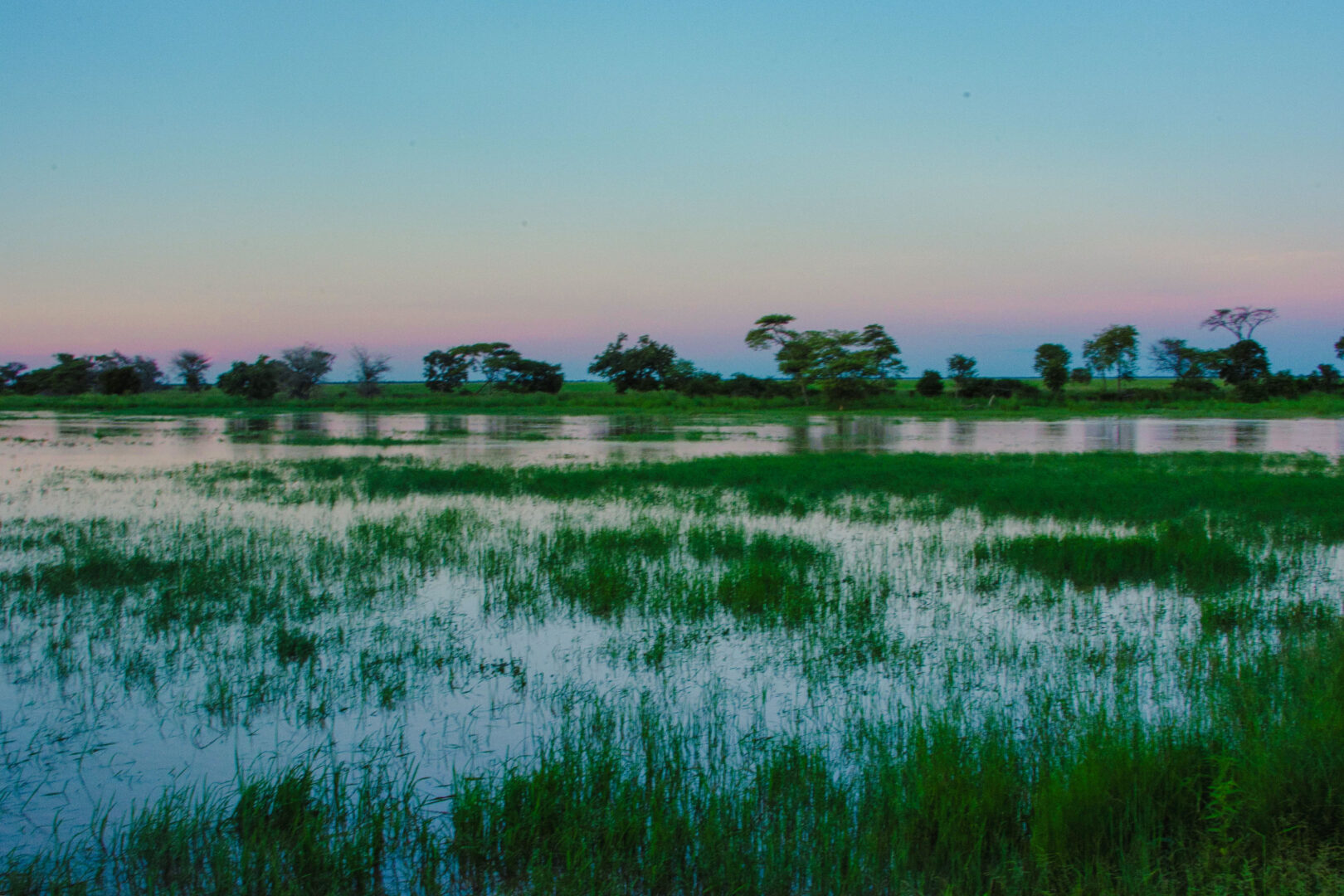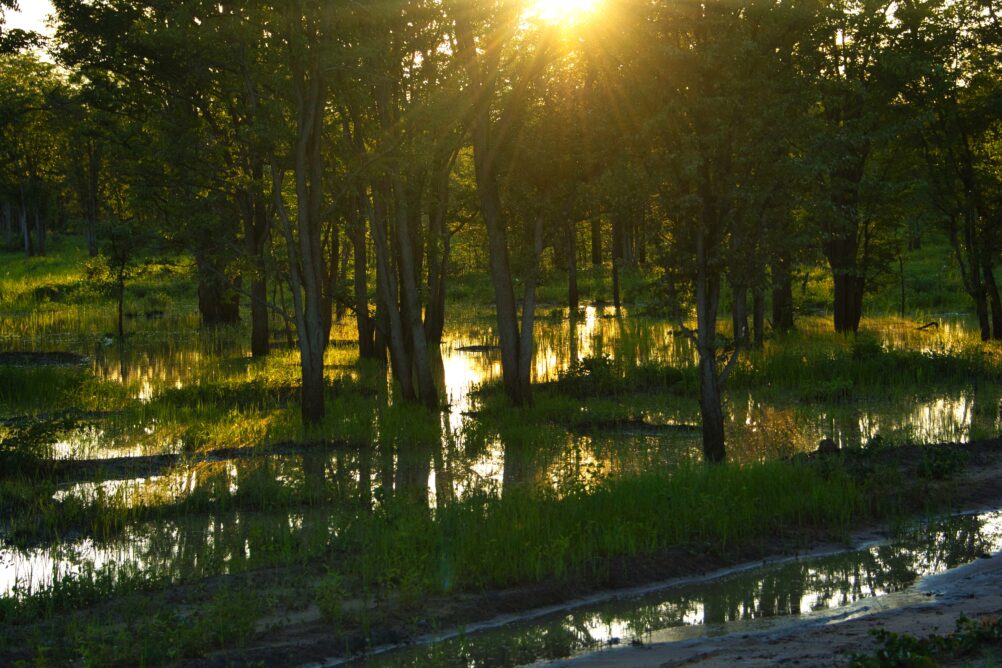Situated secretively within the expansive Kavango Zambezi (KAZA) Transfrontier Conservation Area, the Simalaha Community Conservancy is shaped, sustained and drained by a network of rivers flowing through the Kavango and Zambezi river basins. These waterways are the lifeblood of a complex wetland ecosystem, which holds both vital resources and crucial solutions.
Simalaha was established in 2012 by Chief Sekute and the late Senior Chief Inyambo Yeta, with support from Peace Parks Foundation and spans the local Sekute and Sisheke chiefdoms.

Wetlands are amongst the most productive ecosystems in the world, boasting an immense variety of species and bursting with beneficial services for people and wildlife. They are critical to the health and livelihoods of 4 billion people globally who are reliant on wetlands’ services for wellbeing and security. They host rich biodiversity, regulate water storage, and stash an astonishing volume of planet-warming carbon which is key to offsetting climate change.
Yet, with 35% of wetlands lost globally in the last 50 years, they are our most threatened ecosystem, disappearing three times faster than forests. Simalaha Community Conservancy has a duty of care towards theirs.
Simalaha’s Wetlands Run Deep
Making up just 1,800 km² of the Kavango Zambezi transboundary landscape totalling 520 000 km², Simalaha may seem to lie under the ecological radar compared to the Kavango Zambezi’s five states and their larger landscapes. But here, water stored in wetlands sustains and disperses life of all kinds. The ecosystem supports local communities and serves as a vital hub and stopover for migratory species which rely heavily on the interconnecting regions, and countries.
Much of the wetlands area is covered by the Simalaha plain – intermittently grassy and flooded, in the extreme. This ecosystem has not been spared the effects of climate change, felt through the flux of flash flooding and poor recharging of water, as the flow of inland streams and rivers dissipates over time.

But for wetlands, consistency is key: the delicate balance between water storage and flow governs the aquatic habitats on which Simalaha’s fish, crocodiles, hippos and numerous water birds rely. Seasonally, plains game such as zebra, wildebeest and eland depend on the grassier areas to graze. Here, they mingle with cattle thanks to a unique conservation model, encouraging wildlife to exist in harmony with people and their livestock. The Herding For Health programme combines traditional practices with shared herding knowledge to sustain wild animals, livestock and local livelihoods. This approach, supported by Peace Parks Foundation, Conservation International and other partners, is restoring the delicate balance between the landscape and communities, and providing food and an income stream.
Herding For Health joins a variety of livelihood programmes in the community conservancy, each one respectful of Simalaha’s vulnerable wetlands. Capacity is being built to support the management of this rich natural resource, and community development projects are ensuring its sustainability, as well as productivity.

Conservation-friendly agriculture is integral to supporting the local community, and the wetlands are perfectly placed to support and enhance it. A unique aspect of this ecosystem is that, as the flood waters recede, fertile soil enriched by silt deposits remains. This super-charged soil supports a variety of crops including cabbage, rape and onions. These are both an important source of nutrition for the community, and a source of income through the local marketplace.
A steady water supply would seem implicit in a wetland ecosystem, but water security is not a given; infrastructure and management are key to agricultural success. Peace Parks Foundation is supporting the distribution of smallholder treadle pumps to farmers for growing horticulture and wetland maize. By 2021, we had distributed 490 of these a human-powered suction pumps, designed to draw irrigation water from beneath the ground. By deepening several shallow wetlands, Peace Parks is helping to relieve water scarcity and the reliance on unpredictable rainfall, providing this precious resource consistently to people and animals.

Nature-based Tourism Wins for Wetlands
While investing in crops and natural resources reaps rewards, nature-based tourism is beginning to shine. The wetlands host two important areas that attract visitors: the River Tourism Zone and the Flood Plain Tourism Zone. Together, these offer a growing number of experiences ranging from abundant bird sanctuaries and stunning habitats to heaving pods of hippos and other flourishing species. In 2013, Peace Parks Foundation established an ambitious rewilding programme aimed at both developing Simalaha as a tourist destination and re-establishing wildlife populations and their migration patterns throughout the KAZA transboundary landscape.

Many migratory birds depend on the greater region’s ecological linkages as ‘flight corridors’ along which the wetlands lie. This is a strong motivation for the Great KAZA Birding Route Project currently under development. The project’s benefits are not purely economic, as responsible ecotourism is incentivising communities to invest and protect these areas. In Simalaha, birding tourism has the potential to directly support the development of community-based sustainable livelihoods through the training of bird guides.
Despite these numerous developments, Simalaha’s wild and watery ecosystem may, for now, still be a relatively well-kept secret. But these wetlands punch above their weight, and Peace Parks Foundation acknowledges their critical role in the bigger picture of conservation at scale. We are implementing projects that mitigate climate change and biodiversity loss and increase the resilience and wellbeing of local communities. Peace Parks Foundation, in partnership with the Government of Zambia and Simalaha Community Conservancy’s local chiefdoms, is committed to practical, creative and scalable solutions to protect this remarkable region.






